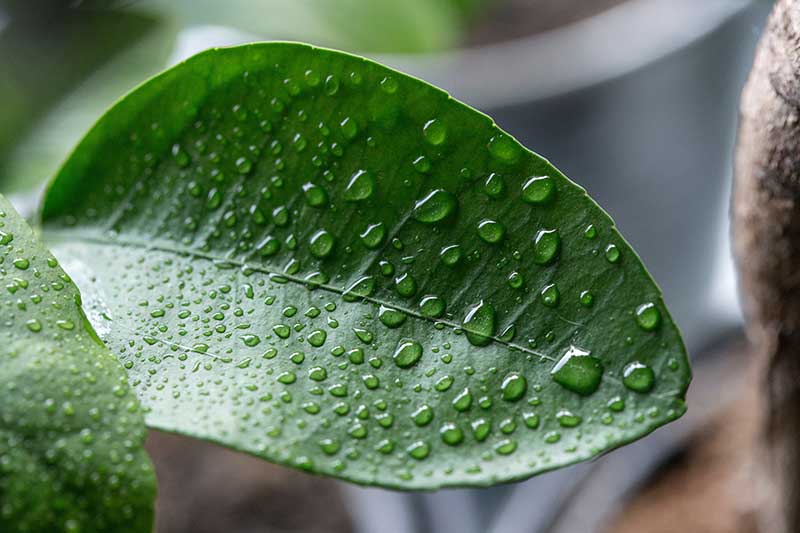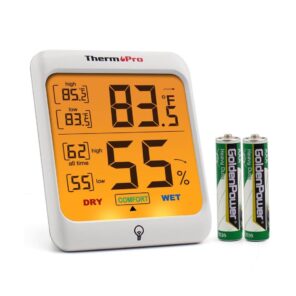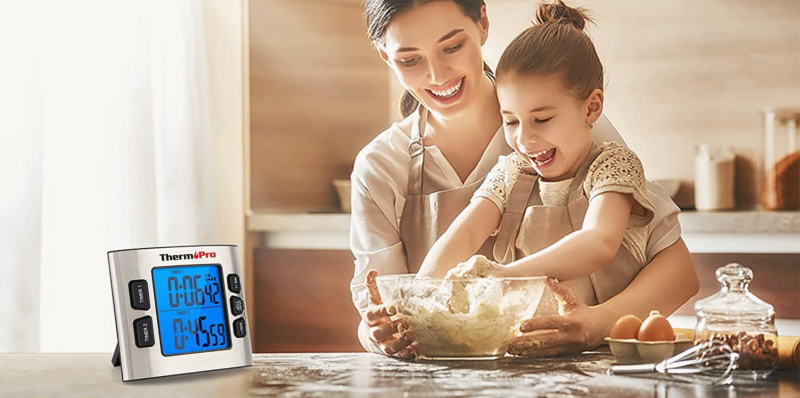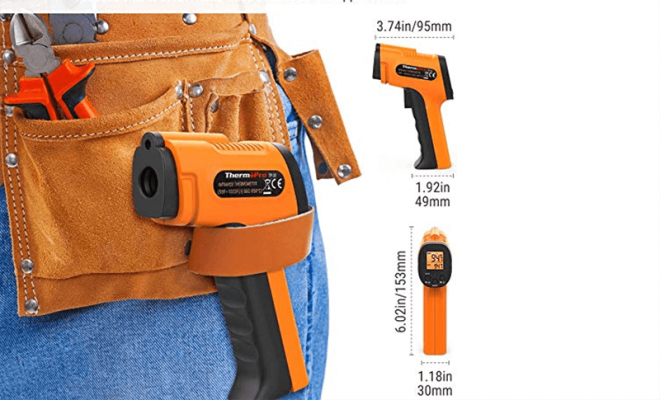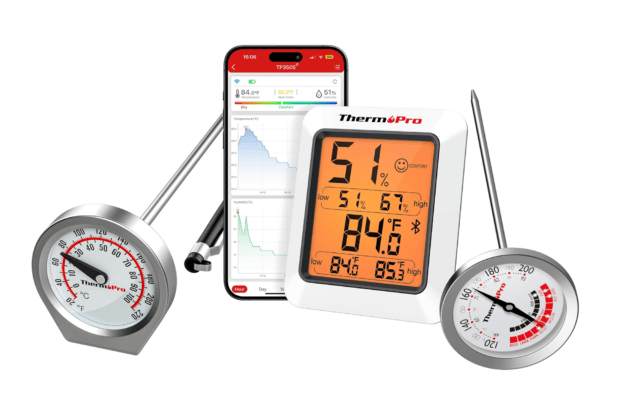Table of Contents
Humidity can be a complex topic to understand. Just about everyone knows that it refers to the amount of moisture in the air, but you’re a lot less likely to find someone who understands the different humidity measurement units.
In this article, we’ll go over the five different units that you need to learn, and we’ll explain why relative humidity is the most useful. And you will get to know a really useful indoor humidity monitor.
5 Units Used To Measure Humidity
There are five units of measurement that you’ll want to understand when you start learning about humidity.
Absolute Humidity
Absolute humidity isn’t typically used. There are just too many variables that affect it, and that makes it practically useless for everything except for a few industry-specific purposes.
However, we will explain it here. Absolute humidity is the measurement of water in its gas state in comparison to a meter of air. Grams are used to measure the water vapor, and the air is measured in cubic meters.
That sounds simple enough, but barometric pressure and other variables drastically impact the air, and that makes it difficult to get useful information from absolute humidity readings. However, absolute humidity can be pinpoint the exact amount of humidity in the air when it is measured properly.
Relative Humidity
Relative humidity is much more useful than absolute humidity. Instead of pinpointing the exact amount of water vapor in the air, the relative humidity unit measures how much water the air can hold over a fairly wide temperature range, and it measures how much moisture is currently in the air.
It’s represented by a percentage. 100-percent represents the air being at its full capacity of moisture, and 0-percent represents air that doesn’t have any moisture in it.
This method of measurement isn’t extremely precise, but it gives you a wider range of measurements, and it allows you to understand exactly how the humidity will change with the weather. If it rains, the humidity percentage will rise, and it will slowly drop as your environment dries out.
Specific Humidity
Specific humidity is a humidity measurement unit that is very similar to absolute humidity, but it’s more useful. Instead of measuring the air in cubic meters, the specific humidity method measures the air in kilograms. Water vapor is still measured in grams.
It’s more useful other methods because it doesn’t account for barometric pressure or temperature. It’s a static measurement that only relies on two variables.
Vapor Pressure
Vapor pressure is another specialized unit of measurement, and it’s not very useful for average people. It doesn’t measure how much water vapor is in the air. Instead, it measures the amount of pressure that is created by whatever amount of water vapor is in the air. In a sense, it’s like a scaled down version of atmospheric pressure.
Dew Point
The dew point is simply the temperature at which water vapor turns into a liquid and creates condensation. The dew point changes depending on the barometric pressure, temperature, vapor pressure, and humidity. You’ll often see the dew point on the morning news, and that allows you to know when to expect condensation to form on plant life or slippery sidewalks.
Why Do We Use Relative Humidity More?
In short, we use relative humidity to measure the moisture in the air because it’s what actually affects us the most. We don’t actually notice the exact amount of moisture in the air. Instead, we notice the rate at which our sweat evaporates. So, having such a complex measurement is unnecessary, and it doesn’t really help us understand what the humidity will feel like.
It also affects us differently depending on the temperature. If it’s really hot out, a high amount of humidity will make it take longer for our sweat to evaporate. That’s why we feel sticky and sweaty on really hot and humid days. However, if the humidity is lower on a hot day, there won’t be as much water on the surface of our skin, and we won’t be affected by it as much. That is why you should always compare the humidity to the heat index in your area. Just knowing the relative humidity won’t be very helpful.
Why Knowing Relative Humidity Indoors Is Important
It’s important to know the relative humidity inside of your home for a few reasons.
First, controlling the humidity in your home will help prevent respiratory illnesses. Humidity affects your lungs because it allows condensation to form. In a humid and hot environment, that condensation cannot evaporate quickly. That creates the perfect breeding ground for bacteria and germs.
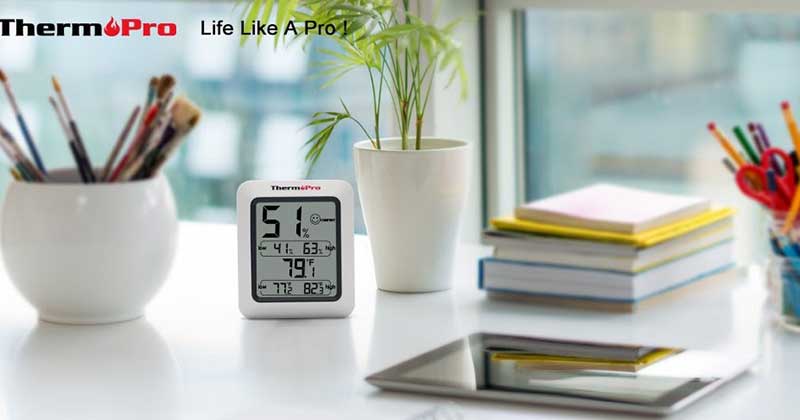
Second, it can help you lower your energy bills. A lot of the time, you feel too cold because the humidity is too high, and that makes a home feel several degrees colder. A lot of people try to ward off the cold by turning up their heat, and that really isn’t necessary. Simply adjusting the humidity can make it feel a little warmer, and you won’t have to payer a higher energy bill because you fired up your heater.
Finally, you’ll feel more comfortable if you can read the relative humidity, and then adjust the humidity to a more suitable level. Your home is supposed to be a relaxing environment. It’s difficult to relax when you’re sweaty, breathing oddly, or too cold.
Read Your Home’s Humidity With ThermoPro
Now that you know all about humidity measurements and why they’re important, you probably want to know how you can actually get those measurements. Well, ThermoPro can help with that. Below are some best indoor hygrometers for you to choose from.
-
Sale Product on saleThermoPro TP53
$19.99$13.99 $13.99Rated 4.65 out of 5 based on 31 customer ratings
A ThermoPro indoor/outdoor hygrometer can tell you the relative humidity in your home with a single glance, and it can give you the exact temperature of your home. With that information, you can easily adjust your home’s humidity to feel comfortable and healthy at all times.

